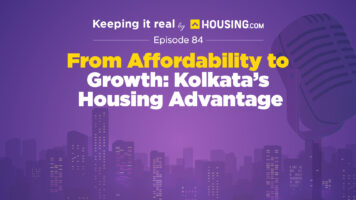When buying property, whether for personal use or investment, the location isn’t just about current convenience. It’s also about future returns and livability. A locality that looks promising today may not necessarily guarantee appreciation unless it’s backed by robust developmental and economic indicators. Assessing the future growth potential of a locality is one of the smartest ways to ensure you’re making a sound long-term real estate decision. Whether you’re a homebuyer looking for a place to settle or an investor aiming for value appreciation, understanding how a locality is poised to evolve can help you avoid costly mistakes and maximise gains.
Why does the future growth of a locality matter in real estate?
When investing in real estate, you’re not just buying a home, you’re investing in the future of that location. A locality’s long-term growth potential plays a major role in determining how much your property will appreciate over time. Here’s why it matters:
- Higher return on investment (ROI): Areas poised for growth typically see faster and greater appreciation in property values, offering better long-term returns compared to saturated or stagnant markets.
- Better rental demand: Emerging neighbourhoods near employment hubs, schools, and transport corridors often attract tenants, ensuring a steady rental income stream for investors.
- Improved quality of life: As localities grow, infrastructure upgrades bring better roads, transport, utilities, and public services, improving day-to-day living for residents.
- Early entry advantage: Buying property before a locality fully develops allows you to lock in lower rates. As development catches up, the value of your investment rises substantially.
- Easier resale in the future: Properties in growth areas tend to see higher demand from future buyers, especially as the neighbourhood becomes more established and better connected.
- Long-term financial security: For end users, investing in a locality with solid future prospects offers peace of mind that your home will grow in value and remain relevant for years to come.
Key factors that indicate growth potential in a locality
To make a smart real estate investment, it’s essential to look beyond current amenities and evaluate signs that point to future progress. These key factors can help you assess whether a locality is on the path to long-term growth and value appreciation.
1. Infrastructure development
The pace and scale of infrastructure development in a locality are among the clearest indicators of its future potential. Upcoming roads, flyovers, metro lines, and utility upgrades signal government or private sector confidence in the area’s growth. For instance, the construction of a new expressway or metro corridor can drastically cut commute times and increase the locality’s appeal to working professionals.
Similarly, improvements in civic infrastructure like water supply systems, power distribution, and sewage management reflect long-term planning and readiness to accommodate a growing population. The presence of large-scale public projects such as airports, industrial parks, or smart city initiatives in or near the locality often acts as a catalyst for real estate demand, pushing both prices and rental yields upward.
Localities that are currently under development but show evidence of sustained infrastructure investment tend to offer higher returns over the long term. This makes it essential for homebuyers and investors to closely track such developments before making a decision.
2. Connectivity and transport
Seamless connectivity is a major driver of real estate growth, especially in urban and semi-urban areas. A locality that offers or is expected to offer strong transport links, such as metro stations, expressways, ring roads, or major bus corridors, has a much better chance of seeing demand rise in the near future.
Proximity to key transport hubs like railway stations, airports, or business corridors adds to the convenience factor and makes the locality attractive to both end-users and tenants. For example, areas connected by upcoming metro lines often experience a surge in real estate interest even before the project is completed.
In contrast, localities with limited public transport or poor road conditions may remain underdeveloped or stagnate, no matter how affordable the property prices may be. Therefore, evaluating both current and proposed transport projects can help you gauge how accessible and desirable a locality will be in the coming years.
3. Social Infrastructure and Amenities
A locality’s social infrastructure plays a vital role in enhancing its liveability and long-term appeal. Areas that already have, or are witnessing the development of, quality schools, colleges, hospitals, shopping complexes, parks, and entertainment zones are more likely to attract end-users and tenants alike.
The presence of branded or reputed institutions (like international schools or multi-specialty hospitals) signals rising demand and investment interest. Access to daily conveniences such as supermarkets, gyms, restaurants, and banking services also adds to the area’s growth momentum.
Moreover, social infrastructure tends to develop in tandem with population growth and rising income levels, reinforcing the area’s potential as a real estate hotspot. While affordability is important, homebuyers today are increasingly prioritising well-rounded neighbourhoods over just cheap property rates.
4. Employment opportunities nearby
Access to job hubs is one of the strongest indicators of a locality’s future growth. Areas located near business parks, IT corridors, industrial zones, or commercial centres tend to experience consistent demand from working professionals looking to live closer to their workplace. When large companies set up offices or when a locality is earmarked for a Special Economic Zone (SEZ), it often leads to a ripple effect, boosting housing demand, driving infrastructure development, and increasing rental yields.
Even upcoming employment hubs matter. If there are announcements about a future tech park, logistics hub, or manufacturing facility, the surrounding areas typically see early investment activity and steady appreciation over time. For homebuyers and investors, choosing a locality with strong or emerging employment opportunities nearby can mean lower vacancy risks, better rental income, and more liquidity if they plan to sell in the future.
5. Government policies and urban planning
A locality’s long-term growth often hinges on how it aligns with the broader urban development vision laid out by government authorities. Areas included in city master plans or targeted for smart city development, metro expansion, or urban renewal projects typically enjoy faster infrastructure upgrades and better civic amenities.
Additionally, policies such as tax incentives for developers, affordable housing schemes, and public-private partnerships can fast-track growth in underdeveloped areas. State government initiatives, such as planned ring roads, new townships, or logistics hubs, often lead to rapid urbanisation and real estate demand in adjoining zones.
Checking the master plan and zoning regulations issued by local municipal authorities gives insight into how the locality is expected to evolve over the next 5–10 years. A locality aligned with proactive, well-planned governance is more likely to see sustained appreciation and livability improvements.
6. Real estate trends and price appreciation
Understanding past and present real estate trends is a key way to evaluate a locality’s future growth potential. Localities that have seen consistent appreciation in property prices over the last 5–10 years often signal healthy demand backed by strong fundamentals.
Compare the price trends of the locality with nearby areas. If it’s showing similar or slightly higher growth, it indicates parity and positive momentum. A sudden spike in prices without supportive infrastructure or demand, however, could signal speculative growth and warrant caution.
In addition to price appreciation, look at trends in rental yields, inventory overhang, and unsold stock. High rental demand, low inventory, and steady price growth together indicate a balanced market with long-term potential.
7. Demographic indicators
The demographic profile of a locality offers meaningful insights into its long-term viability and growth trajectory. A rising population, especially of working-age individuals and young families, often correlates with increased housing demand, better service infrastructure, and overall economic vibrancy.
Look for areas experiencing steady in-migration. This could be due to nearby job hubs, educational institutions, or improved quality of life. A diverse mix of income groups and a growing middle class are also signs of a balanced and sustainable micro-market. On the other hand, stagnant or declining population growth may indicate limited job opportunities or poor infrastructure, making the area less attractive for future investment.
8. Registry status of projects in the locality
The registration status of residential and commercial projects in a locality reflects its legal clarity and market transparency. A high number of registered properties indicates that developers are complying with local laws, and buyers are confident about the legitimacy of titles and ownership transfers.
When assessing a locality’s growth potential, check whether the majority of projects have clear titles and are registered with the local land or property registration authority. Registered properties are also easier to resell and finance through banks, which enhances liquidity and long-term investment value.
Conversely, areas where many projects are unregistered or face legal disputes may signal poor governance, regulatory delays, or land title complications, all red flags for long-term growth.
9. RERA registration and compliance
The Real Estate (Regulation and Development) Act, or RERA, was introduced to bring transparency, accountability, and standardisation to India’s real estate sector. A locality with a high number of RERA-registered projects is a positive indicator of developer compliance, legal safeguards for buyers, and improved project delivery timelines.
RERA compliance ensures that builders disclose key project details, such as layout plans, completion timelines, approvals, and financials, on a public platform. This makes it easier for homebuyers to make informed decisions and reduces the chances of fraud or project delays.
Before investing in a locality, always check the RERA registration status of ongoing and upcoming projects. A strong RERA presence reflects an active and regulated real estate market, which contributes to the locality’s long-term credibility and growth prospects.
10. Land-use zoning and master plan adherence
Every city in India is governed by a master plan that outlines how land is intended to be used, whether for residential, commercial, industrial, institutional, or green spaces. These land-use zoning regulations are crucial in determining the long-term development trajectory of a locality.
A locality that aligns well with the city’s master plan is more likely to experience planned, sustainable growth. For instance, if an area is zoned for mixed-use or future commercial development, it may see a rise in infrastructure, job opportunities, and real estate value. On the other hand, if a residential project is built in an area earmarked for industrial use, it may face legal hurdles or poor quality of life for residents.
Before investing, check whether the locality adheres to the official development plan and zoning norms. Municipal websites or local planning authorities usually provide access to these documents. Compliance with the master plan ensures that your investment is in sync with the city’s long-term vision, reducing risks and enhancing future returns.
How to do your own research on the growth potential of a locality?
While expert advice and developer claims can offer guidance, nothing replaces the value of doing your own groundwork before investing in a locality. Independent research can help you make informed decisions and avoid costly mistakes. Here’s how to get started:
- Visit the area in person: Walk or drive around the locality to get a real sense of its infrastructure, traffic flow, cleanliness, and the availability of everyday amenities. Visit at different times of the day and week to observe patterns.
- Talk to local residents and shopkeepers: They can provide unfiltered insights about the area’s development pace, safety, water supply, power cuts, or any issues not apparent during a site visit.
- Check Google Maps for proximity analysis: Use tools like Google Maps to measure distance and commute times to major employment hubs, schools, hospitals, and public transport points.
- Look up the master plan: Refer to your city’s master development plan to understand proposed roads, flyovers, metro expansions, or any rezoning that may affect the area’s value.
- Track real estate listings over time: Platforms like Housing.com allow you to track pricing trends, supply, and inventory levels. A steady upward trend could signal growing demand.
- Use government and RERA portals: Check the status of local projects, their approvals, and builder reputations on official websites like RERA and municipal corporations.
- Watch the news: Keep an eye on announcements related to infrastructure tenders, land acquisition, urban renewal schemes, or SEZ notifications involving the area.
Doing your homework across these fronts equips you with the clarity needed to assess whether a locality has long-term growth potential or not.
Red flags to watch out for in a locality’s future growth potential
While some localities may appear promising on the surface, there are several cautionary signs that could indicate stagnation or potential risk in the long run. Spotting these red flags early can save you from making a poor investment decision.
- Stalled or abandoned infrastructure projects: If major roadways, metro lines, or flyovers have been under construction for years with little progress, it could signal delays in public investment or legal complications.
- High inventory overhang: A glut of unsold or ready-to-move-in homes with no takers can indicate low demand or over-supply, both of which can suppress price appreciation.
- Poor civic maintenance: Overflowing garbage, broken roads, irregular water supply, and lack of street lighting suggest administrative neglect, which is a strong negative signal for long-term livability and value growth.
- Frequent legal disputes: Areas where projects are caught in land acquisition issues, builder litigations, or illegal encroachments tend to see delayed development and may face resale or financing challenges.
- Unregulated or unplanned development: If the locality has a mix of residential, commercial, and industrial structures without zoning discipline, it may indicate poor urban planning and lead to quality-of-life concerns later.
- No signs of upcoming employment or infrastructure boost: If there’s no mention of upcoming IT parks, industrial corridors, highway links, or public transport projects in planning documents or news, the area’s future growth may remain flat.
- Low RERA compliance among local projects: If many ongoing or upcoming projects are not registered with RERA, it raises questions about developer credibility and legal safety for buyers.
Housing.com POV
The true value of a property doesn’t lie just in its present, but in its future. While glossy brochures and project hoardings can make any locality look promising, it’s the groundwork behind the scenes, like infrastructure, governance, employment generation, and urban planning, that actually determines whether your investment will grow or stagnate.
One of the most common mistakes homebuyers make is focusing solely on the price per sq ft, without understanding why it’s priced the way it is or where it’s headed. It’s highly recommended for the buyers to think long-term: Will this area support your lifestyle five years from now? Is the local governance robust enough to maintain civic services? Is there any real demand driver that will sustain price appreciation?
With rising transparency in real estate due to RERA, digital access to land records, and master plans made publicly available, today’s homebuyers are more empowered than ever. However, many still fall into the trap of emotional buying — driven by discounts, brand value, or superficial locality trends. Our advice? Use emotion to choose the house, but use logic and data to choose the locality.
FAQs
Can social media help assess a locality’s growth potential?
Yes, local Facebook groups, Reddit threads, and real estate forums often share unfiltered opinions, updates on civic issues, or news about upcoming projects. These real-time discussions can offer insider views you won’t find in formal reports.
How do upcoming retail and commercial spaces influence a locality’s growth?
New malls, coworking spaces, and commercial hubs indicate growing demand and footfall in the area. They not only raise a locality’s profile but often attract better infrastructure and increase rental and resale demand.
What role does water availability play in a locality’s long-term livability?
Access to consistent water supply (municipal or otherwise) is a crucial but often overlooked factor. Chronic water scarcity can cap future development, drive residents away, and affect resale value.
Should buyers consider air quality and environmental health while assessing a locality?
Yes, areas with poor air quality, limited green zones, or industrial pollution may face long-term health risks and reduced livability — factors that could impact property appreciation and desirability over time.
Can too many new projects in one area be a bad sign?
Yes, rapid over-supply without matching demand can lead to price stagnation or even depreciation. It may also strain local infrastructure. Look for balanced development rather than overcrowded construction zones.
| Got any questions or point of view on our article? We would love to hear from you. Write to our Editor-in-Chief Jhumur Ghosh at jhumur.ghosh1@housing.com |







